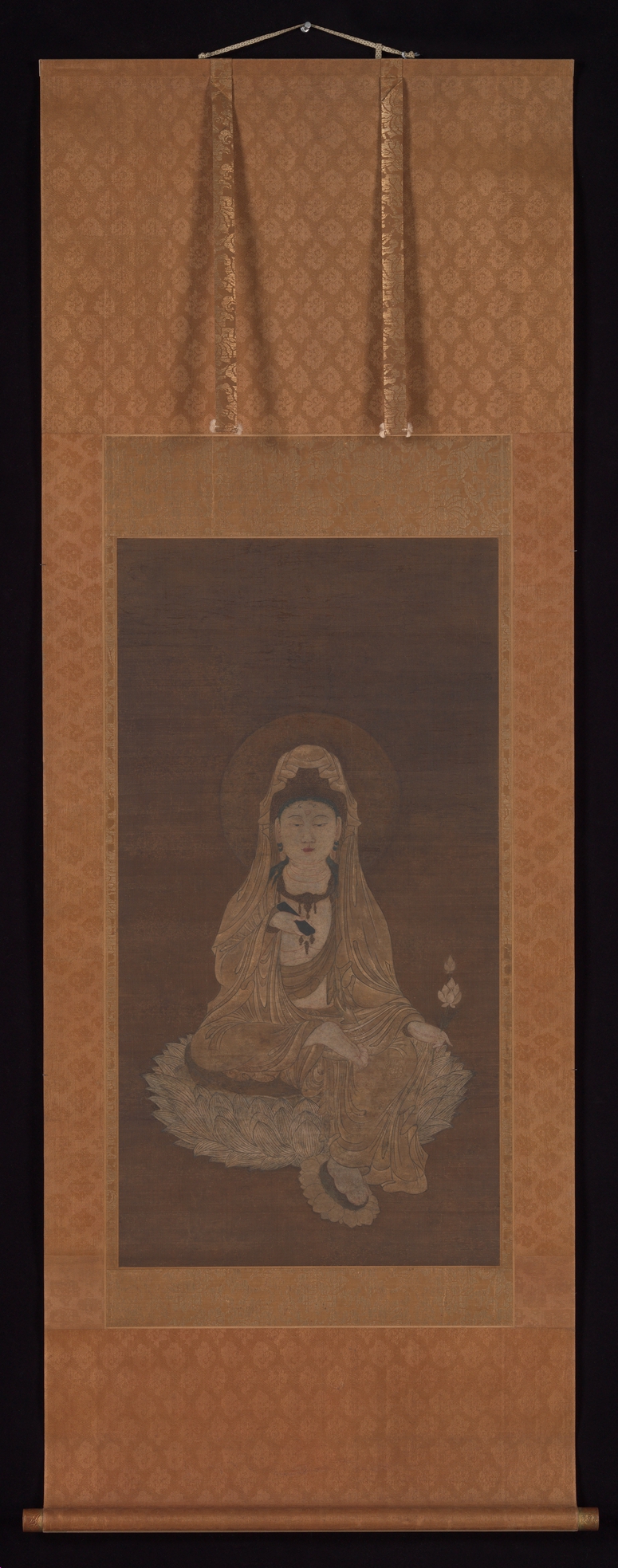White-Robed Kannon
Not on view
This graceful frontal view of Kannon (Sanskrit: Pandaravasini) emphasizes the deity's dignity and compassion. It derives from Esoteric Buddhist iconography that systematically groups deities into mandalas of the two worlds: the Diamond World Mandala and the Womb World Mandala. White-robed Kannon is one of twenty-one Kannon in the Lotus Court section of the Womb World Mandala. The bodhisattva's pose, with one leg pendent, seems to be a precursor to the more relaxed pose he assumes in the monochrome ink painting of White-robed Kannon in a landscape. Here, Kannon, wearing a delicately decorated white robe and sitting on a white lotus pedestal, conforms to the feminized concept of “Mother Kannon,” an aspect of the deity that was developed further in later medieval worship. Some stiffness of line in the robes is probably the result of copying from a model. More fluid brushstrokes in the lotus petals create a sense of volume, a quality that suggests a thirteenth-century date for this work.
Due to rights restrictions, this image cannot be enlarged, viewed at full screen, or downloaded.
This artwork is meant to be viewed from right to left. Scroll left to view more.



